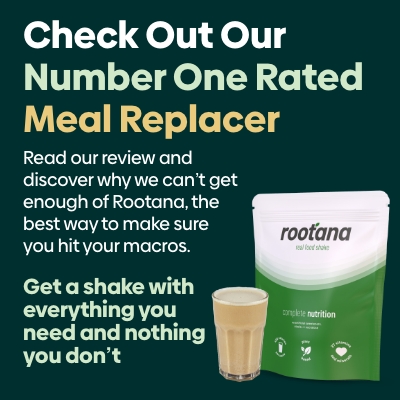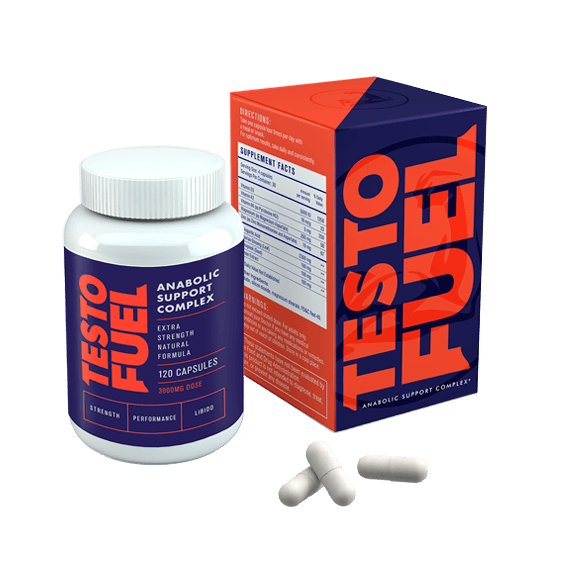Is Huel Healthy?
Huel, or Human Fuel, is the most popular meal replacement shake in the world, is Huel healthy? In this article, we will be taking a look at the ingredients list so that we can find out how healthy Huel is. We will also take a look at some healthy alternatives to Huel that you might consider instead. If you want to find out where Huel ranks in our top 5 list, check out our article on the best meal replacement shakes.
What is Huel?
Huel is a meal replacement shake that doesn’t like to call itself a meal replacement shake! They define their product as food. Whatever you prefer to think of it as Huel is a powdered food that you mix with water. You can use it for breakfast, lunch, or dinner. Some people choose to use it for 2/3 meals, followed by a healthy evening meal.
Huel offers a wide range of products, but its biggest seller (and main focus) is the powdered meal replacement, which is currently on its third version. There is a higher-protein/lower-carb version called Huel Black, and a gluten-free version. Huel also sells a savoury instant food, protein bars, snack bars, and ready to drink shakes.
Are Meal Replacement Shakes Healthy?
Before looking at Huel specifically, it is important to look at the meal replacement industry as a whole. For a very long time, meal replacement shakes were dismissed by fitness professionals as unhealthy, but this opinion was often based on hearsay rather than scientific fact.
In fact, a review of the relevant literature paints an entirely different picture. When used correctly, meal replacement shakes can be incredibly effective in weight management. A meta-analysis in 2003 found that meal replacement shake diets were both safe and effective for producing sustainable weight loss in overweight and obese people [1].
They can be particularly effective at providing initial fat loss, and then sustaining it over a long period of time, reducing inflammation and oxidative stress [2]. A 2018 study found that consuming a 388 calorie meal replacement shake at dinner time for 12 weeks led to improvements in body composition, improvements in blood glucose, and a reduction in blood pressure [3].
But it is not just any meal replacement shake that can provide such benefits, a 2008 study compared high-protein meal replacements (HPMR) with low-protein meal replacements and found that the HPMR group lost significantly more body fat while maintaining more muscle mass [4]. In other words, you want your meal replacement shakes to be high in protein for the best results.
Studies have consistently found that low-calorie meal replacement diets are more effective than low-calorie food-based diets [5]. Something that flies in the face of the accepted wisdom.
Of course, weight management is just one aspect of health, but considering the fact that obesity is the number one contributor to poor health in the Western World, the importance of proper weight management to overall health cannot be underestimated.
Luckily, we are not dealing with an either/or situation here. Most good-quality meal replacement shakes are also highly nutritious, and they are designed to be consumed alongside healthy food, not instead of it.
While it is certainly possible to replace all food with a meal replacement shake, this is rarely recommended. Most meal replacement shakes recommend switching to one or at most two shakes per day and consuming a healthy third meal.
Now that we have established the fact that quality meal replacement shakes can be healthy, let’s take a look at Huel specifically to see how it stacks up. We will dive deep into the ingredients list, which will give us all the information that we need.
Huel Ingredients
There are a number of ingredients in Huel, but not all of them are relevant to the conversation. Huel uses sucralose as an artificial sweetener, but there’s not much point in discussing it in much detail here. Instead, we will focus on the nine most important ingredients.
Oat Flour
The first ingredient in Huel, and probably the most important is the oat flour they use. This will make up the bulk of the powder. Oat flour is a superb ingredient for any meal replacement shake, and it is used in most of them. High in beta-glucans, oat flour is a great fibre source, this is great as fibre has many health benefits.
Fibre can help to improve your gut health [6], reduce bad (LDL) cholesterol levels [7], reduce your risk of heart disease, and it can help to prevent overeating by increasing satiety after a meal. Oat flour is also a great source of low GI carbohydrates, it provides a decent amount of protein, and is a great source of healthy fats.
Pea Protein
Pea protein is a high-quality plant-based source of protein, rich in every amino acid bar one. Luckily, that amino acid can be found within brown rice protein which Huel also uses.
Pea protein doesn’t have any specific health benefits but offers all the benefits that any protein can. Increased metabolic rate, preservation of lean muscle mass during a diet, and satiety, which as we have already explained are very important during calorie deficit diets [8]. As we mentioned earlier, it is high-protein meal replacement shakes that are the most effective.
Ground Flaxseed
As with oat flour, ground flaxseed is one of those wonderful all-rounder ingredients that are so popular in fitness circles. If the term superfood was anything other than a marketing ploy, it would easily describe ground flaxseed!
High in omega-3 fatty acids, ground flaxseed is also a source of top quality protein, low GI carbohydrates, and even some fibre. Flaxseeds are incredibly high in lignans and are therefore being studied for their ability to fight cancer cells [9].
Brown Rice Protein
Another high-quality plant-based protein source, brown rice protein has been primarily added to Huel because it forms a complete protein with pea protein. But don’t let that make you think that brown rice doesn’t have its own health benefits. Due to its high BCAA content, brown rice protein often compares favourably with most protein powders and competes well with whey [10].
Tapioca Flour
Used as a thickening agent, tapioca flour has little nutritional value, but should not be considered unhealthy either. This is a neutral food, that can naturally improve the consistency of your shake. Tapioca flour comes from cassava, a staple food of many cultures, it contains zero protein, zero fat, and no vitamins or minerals. It is 89% carbohydrate and 11% water.
Sunflower Oil
A common fat source in all foods, sunflower oil is used as an emulsifier and a fat source. High in antioxidants, sunflower oil is a good fat source, and a rich source of vitamin E. Sunflower oil represents 7% of the total energy in Huel version 3 powder, and 12% of the Black edition Huel. It represents 25% of the fats in Huel. The remaining 75% comes from MCT powder (see below), oat flour, and flaxseed.
MCT Powder
While there are many benefits of MCT oil powder, we should first point out that Huel only contains 1.1 grams of MCT powder per serving, which is just 8.5% of the fat content. This is not particularly high, and therefore the benefits may be diminished.
MCT oils have been shown to reduce the risk of cardiovascular disease, helping to lower cholesterol, reduce inflammation, and reduce blood pressure [11]. They are certainly healthy, and it would be nice if Huel had used them more.
Acerola Cherry
Acerola cherries were added as a natural source of vitamin C, which has many health benefits. There are animal studies that show acerola cherries may be effective at fighting certain cancers, but no human studies as of yet [12]. They are often touted as stress-relieving, due to the effect of vitamin C on stress and anxiety [13].
Kombucha
Kombucha is usually a caffeinated low-alcoholic beverage that is particularly popular in South America. However, nobody drinking their Huel wanted extra caffeine or alcohol, so there was initially a bit of a backlash about this.
Huel pointed out that they were using caffeine and alcohol-free version of kombucha, and that it had only been added for the B vitamins. Which should please everyone, but society is quite fickle! Anyway, kombucha is a source of B vitamins, and B vitamins have many health benefits.
Is Huel Healthy?
Yes, Huel offers all of the benefits of a meal replacement shake. It makes dieting easier and more effective, helping with long term weight management. Arguably the most important component of health.
But Huel does not rely on its weight management benefits alone, it has packed its ingredients list with high-quality ingredients as well as all the vitamins and minerals required for healthy day to day living.
Are There Better Alternatives to Huel?
While Huel is certainly a healthy option, it is not necessarily the healthiest meal replacement available to you. If you are looking to lose weight then there are better meal replacement options.
Instant Knockout Complete is a fantastic example of a meal replacement that is optimised for weight loss. It contains more protein and fibre per serving than Huel, meaning that you will have more satiety and increased muscle preservation.
Rootana is another alternative to Huel, providing all the same benefits but avoiding the use of artificial sweeteners such as sucralose. Rootana is also non-GMO, non-irradiated, soy-free, lactose-free, and contains zero artificial colourings.
Final Thoughts: Is Huel Healthy?
The misinformation surrounding meal replacement shakes was at an all-time high when Huel entered the market in 2015. Since then, Huel has benefited from (and contributed to) a more balanced discussion about the role of meal replacement shakes in a healthy diet.
Good health is caused by more than just diet. It requires good sleep practice, healthy mental health, frequent physical activity, nutrition, and weight management. Huel can help with the last two by providing a nutritious shake that is only 400 calories per serving.
But there are many alternatives to Huel out there, and it would be a mistake to overlook them. Instant Knockout Complete is an incredible meal replacement for people looking to lose weight healthily, while Rootana provides a shake that is free from artificial sweeteners and colours. If you want to find out which meal replacement we think is best, then check out our review here.
Frequently Asked Questions
How to Take Huel?
Fill a shaker with 500ml of water and two scoops of Huel powder. Tighten the lid and then shake for 10-20 seconds. After that, you can either pour it into a glass or drink it straight out of the shaker. Use more or less water to change the consistency to suit your preference.
Is Huel Safe?
Yes, Huel contains no ingredients that are banned or considered dangerous. Side effects from Huel are very rare and mostly revolve around digestive issues during the first week of use. Huel is as safe as any regular food product.
Is Huel Good for Weight Loss?
Huel can be very effective for weight loss. It is only 400 calories per serving, and it contains enough protein and fibre to keep you feeling full between meals. Making it ideal for maintaining a calorie deficit.
Is Huel Gluten-Free?
The regular Huel powder is not gluten-free; however, Huel offers a gluten-free version of their powder which you can use instead.
Is Huel Vegan?
Yes, Huel does not use any animal products in any of its range
References
[1] https://www.nature.com/articles/0802258
[2] https://www.ncbi.nlm.nih.gov/pmc/articles/PMC2851659/
[3] https://www.ncbi.nlm.nih.gov/pmc/articles/PMC6327254/
[4] https://nutritionj.biomedcentral.com/articles/10.1186/1475-2891-7-23
[5] https://www.sciencedirect.com/science/article/pii/S2212267221003026
[6] https://pubmed.ncbi.nlm.nih.gov/16918875/
[7] https://pubmed.ncbi.nlm.nih.gov/9925120/
[8] https://www.ncbi.nlm.nih.gov/pmc/articles/PMC7539343/
[9] https://www.ncbi.nlm.nih.gov/pmc/articles/PMC4375225/
[10] https://pubmed.ncbi.nlm.nih.gov/23782948/
[11] https://www.ncbi.nlm.nih.gov/pmc/articles/PMC4882694/
[12] https://pubmed.ncbi.nlm.nih.gov/12026193/
[13] https://www.ncbi.nlm.nih.gov/pmc/articles/PMC6071228/
Meal Replacements

